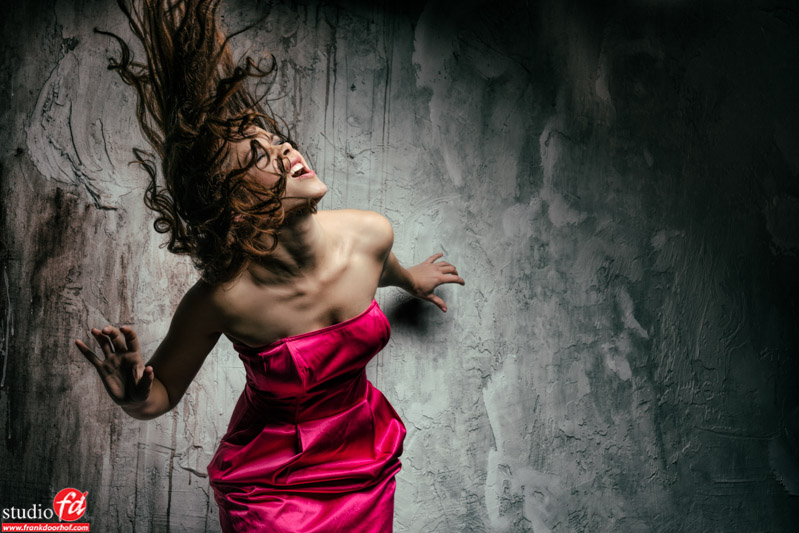How to very easily find out your flash duration
Flash duration and freezing motion
Freezing motion is fun
One of the things I always love to do during photoshoots is add some motion to the shots.
If you have ever tried this, you will probably know it’s all about timing. But even then, you probably noticed that sometimes the images are razor sharp and sometimes a bit blurred. How is this possible when you use the same strobes? Read more about flash duration and freezing motion.
The first thing you think is of course, that you probably timed it slightly differently.
But the reason is probably somewhere else.
Flash duration
You may have already noticed the flash duration in the specs of your strobes.
But how do you read this?
Well, that’s the problem when you see 1/1.000-10.000 T.1 or T.5. It probably doesn’t really ring a bell.
I will not make it too technical but see the flash duration as your shutter speed.
When you take a picture in your studio without strobes the images should be black. Because we have to take into account the X-sync in the studio (otherwise you see those nasty black bars) we shoot at 1/125 in the studio. Normally this would make it impossible to freeze motion. But because the flash is just a pulse MUCH faster than 1/125 it’s not a problem.
So that T.1 and T.5 values can be seen as your shutter speed (as a reference, it’s slightly more complicated).
For me, a T.5 value higher than 1/2000 is enough to freeze most motion. Anything higher than 1/5000 is awesome for really razor-sharp motion with models.
I already told you that the values don’t really tell the story. This is because they will vary over the output of your strobe.
Some strobes are super fast on the lowest setting, and some are the fastest on 75%
At first sight, you might think that it doesn’t really matter. But imagine shooting a jumping model on the lowest setting, that would not give you a lot of playroom with your depth of field. So, being able to shoot it with more power is very much needed. This is why most professional strobes have the fastest flash duration at 50-80%.
There are two ways to see the flash duration really fast.

Important gear for freezing motion
Sekonic 858
Although the Sekonic is a lightmeter it also has a great feature that makes it possible to measure the flash duration and even show the graph. But this is an expensive solution.
The fan
A much cheaper, but less accurate, and more fun way is to use a fan.
Put the fan on full power.
Place your camera on a tripod, adjust the strobe from lowest to full power, and take an image every stop (of course adjust the aperture).
In Lightroom you can now easily see in which images the blades are frozen most.
In this video, I tell you a bit more about freezing motion.
And some of the images from the video.
During the workshops, we talk a lot about technique, lighting, coaching the models, retouching, and in essence every topic the attendees want to learn about.
Do you also want to visit a workshop?
Most workshops at fotografie-workshops.nl are in Dutch, but if you let us know a few weeks in advance and we can switch them to English.








You must be logged in to post a comment.